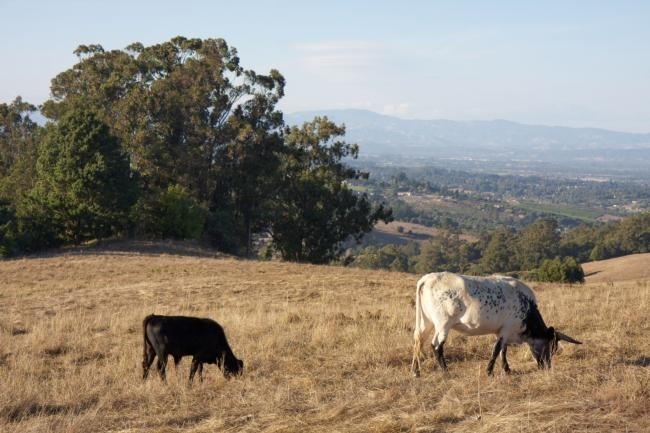
"We see clearly what a bust cycle looks like," said Mark Battany, UC Agriculture and Natural Resources viticulture and soils advisor in SLO County. "Ranchers have no choice but to sell off their cows and rebuild the herd when the rain comes back."
Sahagun reported that ranchers in the area have suffered severe drought for centuries.
"During a drought that ended in 1864, some ranchers drove their herds off cliffs and into the ocean below to stop their suffering," the article said.
The current drought is leaving landowners few options. The county placed a two-year moratorium on new agriculture that depending on the aquifer, so rangeland can't be converted to vineyards at the moment.
"Ranchers are getting hit hard from every direction," said Royce Larsen, UC ANR natural resource watershed advisor in SLO County. "It's a grim and desperate outlook."
Other news over the weekend included:
Holy S***! Almonds require a ton of bees
Tom Philpott, Mother Jones, May 25, 2015
Growing almonds in California takes about 1.7 million bee hives, drawing a large fraction of the nation's available bee hives. Why don't they stay in California? The state is already home to 500,000 of the nation's 2.7 million hives, said Eric Mussen, UC ANR specialist emeritus based at UC Davis. The almond bloom is great for a few weeks, but in terms of year-round foraging, "California is already at or near its carrying capacity for honeybees," he said.
Farm Beat: Here is how hikers, cattle can coexist
John Holland, Modesto Bee, May 22, 2015
UC ANR released a five-page brochure last month that shows how hikers and other visitors can avoid conflicts with cattle that graze on public land. Cattle fatten up nicely when they can graze calmly – good for the rancher and good for the buyer of the meat down the line, the story said.